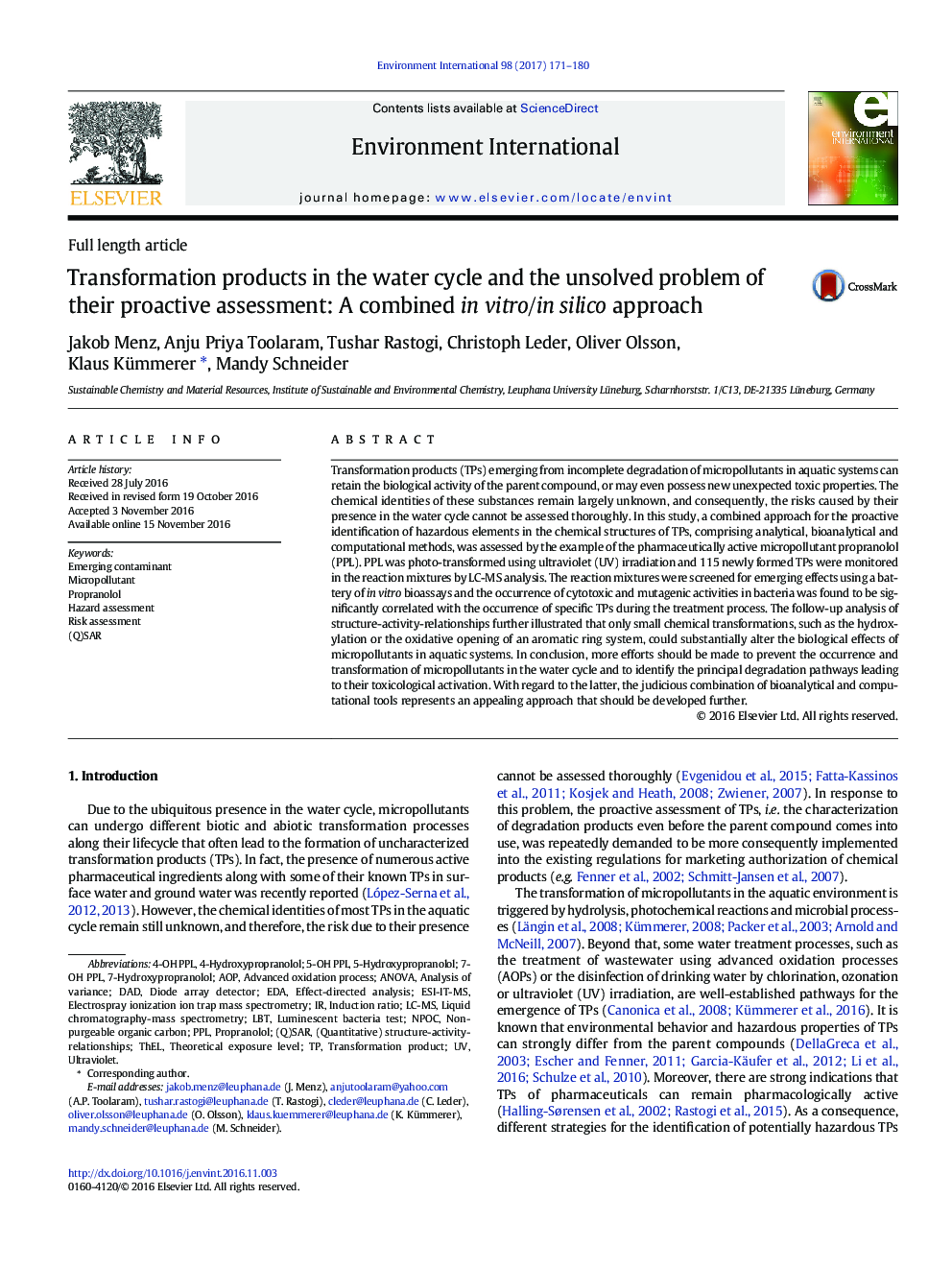| کد مقاله | کد نشریه | سال انتشار | مقاله انگلیسی | نسخه تمام متن |
|---|---|---|---|---|
| 5748469 | 1619032 | 2017 | 10 صفحه PDF | دانلود رایگان |

- An in vitro/in silico approach for the identification of hazardous TPs was assessed.
- A mixture of 115 TPs was generated from propranolol using UV irradiation.
- The emergence of in vitro effects coincided with the occurrence of specific TPs.
- Hazardous chemical structure elements were identified by (Q)SAR analysis.
- The proactive identification of hazardous TPs was proven as principally feasible.
Transformation products (TPs) emerging from incomplete degradation of micropollutants in aquatic systems can retain the biological activity of the parent compound, or may even possess new unexpected toxic properties. The chemical identities of these substances remain largely unknown, and consequently, the risks caused by their presence in the water cycle cannot be assessed thoroughly. In this study, a combined approach for the proactive identification of hazardous elements in the chemical structures of TPs, comprising analytical, bioanalytical and computational methods, was assessed by the example of the pharmaceutically active micropollutant propranolol (PPL). PPL was photo-transformed using ultraviolet (UV) irradiation and 115 newly formed TPs were monitored in the reaction mixtures by LC-MS analysis. The reaction mixtures were screened for emerging effects using a battery of in vitro bioassays and the occurrence of cytotoxic and mutagenic activities in bacteria was found to be significantly correlated with the occurrence of specific TPs during the treatment process. The follow-up analysis of structure-activity-relationships further illustrated that only small chemical transformations, such as the hydroxylation or the oxidative opening of an aromatic ring system, could substantially alter the biological effects of micropollutants in aquatic systems. In conclusion, more efforts should be made to prevent the occurrence and transformation of micropollutants in the water cycle and to identify the principal degradation pathways leading to their toxicological activation. With regard to the latter, the judicious combination of bioanalytical and computational tools represents an appealing approach that should be developed further.
Journal: Environment International - Volume 98, January 2017, Pages 171-180